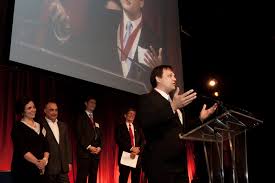 Written by Access Industries
Written by Access Industries
Len Blavatnik is known for many things. The first and most recent is that he was named the 42nd richest man in the world by Business Insider magazine. His rise to fame and fortune started when he formed Access Industries back in 1986. He is also known for his turnaround of Lyondell Basell that made him billions. He then became a force in Hollywood with his 2011 purchase of Warner Music. Blavatnik U.S. Citizen was initially born in the Ukraine and went to University in Russia. What sets him apart of other billionaires are charitable deeds and contributions to science education.
Tel Aviv University
The Blavatnik Family Foundation has contributed 20 million dollars to the Blavatnik initiative of the university of Tel Aviv. This is a multi-year program focused on interdisciplinary scientific research student film production and faculty recruitment.
Harvard University
His foundation contributed 50 million dollars to Harvard University for early stage medical research. This will also provide support to graduate business students to pursue entrepreneurial projects related to the life sciences.
New York Academy of Sciences
Over the next ten years, the New York Academy of Sciences will get 30 million dollars for the establishment of the Blavatnik awards for young scientists. Scientists who are under the age of 42 will be eligible to win the 250,000 dollar prize.
_____________________________________________
These are just a few of many contributions that the Blavatnik billionaire‘s Access Industries and Blavatnik Foundation has made to the world.
 REITs are a great way to invest – even for the beginner.
REITs are a great way to invest – even for the beginner.
 If you pay any attention to the industrial world, you probably don’t need to be introduced to Leon Blavatnik. You’d probably kill to meet him in person, but it’s not like you need to be told about the billionaire and all he has accomplished before even reaching the age of 60. The man is not just a champion of industry, but charitable efforts as well.
If you pay any attention to the industrial world, you probably don’t need to be introduced to Leon Blavatnik. You’d probably kill to meet him in person, but it’s not like you need to be told about the billionaire and all he has accomplished before even reaching the age of 60. The man is not just a champion of industry, but charitable efforts as well.